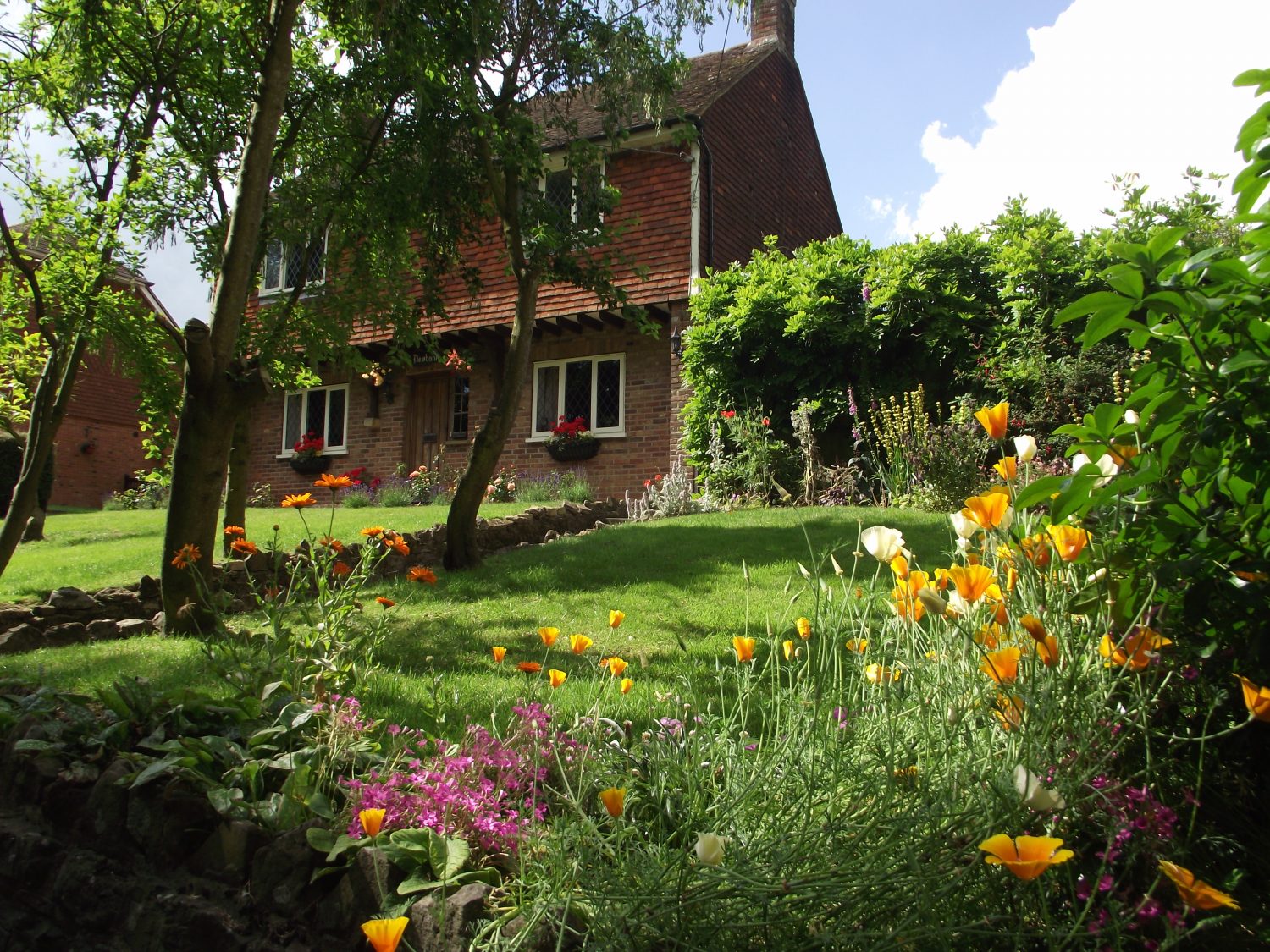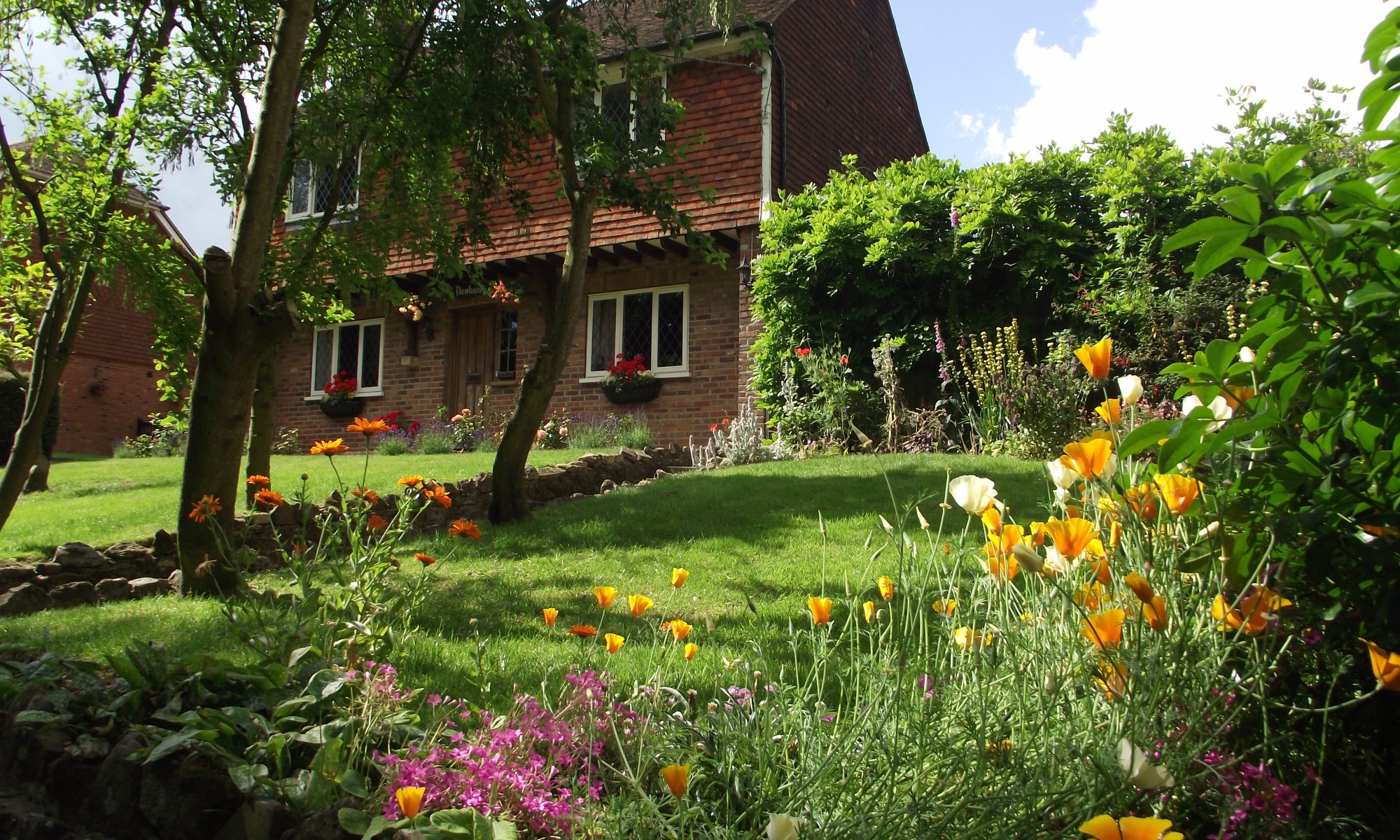It’s that time of year when you suddenly notice your lawn is not at its Wimbledon best – time for expert advice. No matter how much you love gardening, there is one job you really shouldn’t try and do yourself: fix your lawn.
Grant Goldfinch, of the Lawn Revival Team, tells us that one in five of the lawns he is called out to look at have been damaged by the homeowners themselves over fertilising using garden centre products. So we asked Grant, and Matthew Boatwright of Kent & Sussex Lawns, to share some of their lawn lore with us.
Grant Goldfinch, Lawn Revival Team
Has lawn care changed in the twenty years you’ve worked in it?
There is a movement towards natural solutions, because legislation is removing a lot of the magic bullets we used to have in the form of chemicals. A lot of what we do is around good soil health – 90% of lawns can be renovated through a regular treatment programme, aeration, scarification (raking) overseeding and top dressing. Using those techniques we can bring them back to their former glory or better.
Do you offer regular maintenance packages?
We do seasonal lawn treatment programmes, predominantly based around weed and feed, controlling the moss. We conduct four or five treatments a year depending on the lawn and every time we treat it, we will inspect the lawn and if we identify a pest or disease issue, such as red thread, we would treat that.
Do you give your customers advice on what they can do to improve their lawns themselves between visits?
Yes, cultural control is advising customers what they can do to maintain the lawn in its best condition. For example, if you have a lot of coarse grass growing, from blown in weed grass seeds, you should change your mowing direction each time, because those grasses don’t like being mown into. Also avoid mowing too short because it will encourage moss and weeds. A lawn is all about competition between species and if you’re knocking back the grass too low, you’re putting it at a disadvantage. The optimal length is 1.25 to 1.5 inches.
Is there an ideal time of year to start lawn care?
All four seasons need different treatments for different reasons – you can start at any time of year, but we will be doing different things. In spring you kill weeds and feed grass, continuing through summer, then in autumn and winter it’s moss control and hardening the grass up. If you start a seasonal treatment plan in the summer we wouldn’t be able to start killing the moss until autumn – and you can’t kill weeds in winter, because herbicide is only effective if the plant is growing.
Are there ever lawns that are beyond repair?
With new build houses, the lawn tends to be thrown down on top of debris and compacted ground, so it looks lovely when you buy the house, but as soon as you have a hot summer, it starts to suffer. A lot of the lawns we lay are replacements for new houses. It’s not cost effective to keep repairing them, better to start again and prepare the soil, have the right kind of root loam and then it will last.
Do you offer services for other parts of the garden?
In autumn we do leaf clearance because of the damage it can do encouraging bugs. Most of our customers are lawn enthusiasts themselves and like to do the mowing themselves, but we do a lot of pre-season and post-season mowing, because you want to make sure you are removing any debris getting it ready for the season, or putting it to bed for winter and we have specialist mowers which act like vacuums clearing it all up. The main other thing we do is putting in steel edging, to create a neat edge next to flower beds.
Lawn Revival Team, 01580 712129, 07769 705231
Matthew Boatright, Kent & Sussex Lawns
What are the most common lawn issues people call you about?
Moss. People call me after the winter when it’s been wet and there’s a lot of moss, also fungal diseases, particularly red thread which creates bleached patches on the lawn.
Do you offer regular maintenance packages?
Essentially that’s what we do. We offer regular visits, two or four times a year, to fertilise, do treatments, weed control, scarifying and aeration in the autumn and through the winter months. It helps with drainage and to allow oxygen into the root system.
Is there a minimum lawn size you will treat?
If I can walk on it, I can treat it.
Are the products you use safe for children, pets and wildlife?
They are rigorously tested and it’s all about applying them correctly, at the correct dose rate. Some you need to be prudent with, because they can be harmful to aquatic life, so you leave buffer zones if people have ponds – that’s why you need an expert. We also make sure our customers know what time we’ve finished, so they can keep pets and children in until enough time has passed.
Are there ever lawns that are beyond repair?
There are often problems with lawns with new build houses, but even with properly laid lawns, they have a life span like any plant and the time will come when they start to thin out and the moss starts to take over, so then you are better to relay it.
Kent & Sussex Lawns, 0845 467 0258
TEST
windmill walk june
You may also like
Go with the Flow
Sue Whigham shares some valuable new-to-gardening advice I’m sure that by now we should be used to the rain but I’m not entirely sure that we are. We had a dry, sunny day the other day and how everybody’s mood...
Farm Fables
Jane Howard gets to the bottom of why so many ponds have disappeared across the High Weald I have a new passion, almost an obsession, it’s about ponds. And there’s a distinct possibility I might become a bit of a...
Hedge Issues
Sue Whigham takes a meander along nature’s verdant and vital corridors Recently the BBC’s Today programme carried a feature about England’s hedgerows which created a lot of interest among listeners. On the strength of that, Martha Kearney interviewed one of...















